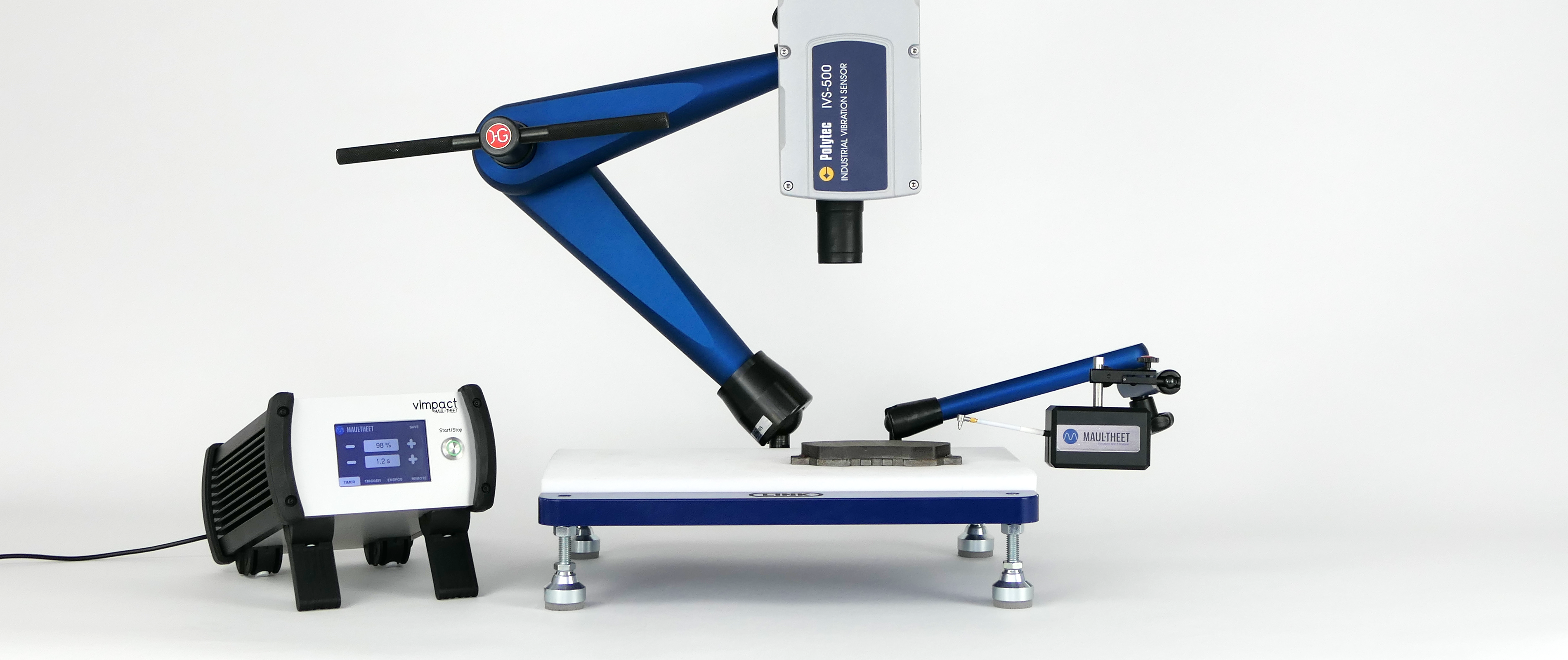Natural Frequency Test Stand | NFT
High-precision test bench for determining natural frequencies and damping with an interface to ProLINK
With the Natural Frequency Test Stand |NFT it is possible to determine the dynamic parameters (natural frequencies and damping) of various technical components with one click.
For example, in the development and production of brake systems, brake linings are of central importance. The dynamic parameters of the brake pads are essential characteristics both for simulating the brakes during the development process and for quality control in production. The metrological determination of the dynamic variables (also modal variables) of brake linings is described in SAE J2598, for example. With LINK, MAUL-THEET offers a complete system that automatically carries out and evaluates these measurements in accordance with SAE J2598 at the push of a button. The data obtained in this way can be stored in ProLINK or output as ASCII, PDF and CSV.
Advantages & Innovation
Automatic measurement with just one mouse click
Central database through ProLINK
Vibration measurement with Laser Doppler Vibrometer, accelerometer or microphone
excitation by automatic modal hammer
Easy to use software
Cost and time savings due to low personnel costs
Automated test system for determining natural frequencies and damping
Calculation of Damping or Loss Factor according to SAE J2598
Applications & Integrations
damping values for brake pads according to SAE J2598
Quality control
Sampling inspection
Material testing
Research and Development
Product testing
model updating
experimental modal analysis
The NFT consists of a steel plate with integrated foam with the following components:
Excitation Unit
The broad band excitation is done with an Automatic Impact Hammer:
Frequency Range 0.3 to 40 kHz
Impact Force up to 200N peak
High Reproducibility
Vibration Sensor
The following sensors can be used with the VTS:
Laser Doppler Vibrometer
Acceleration Sensor
Microphone
Data Acquisition
4 Channel DAQ synchronous sampling:
AC, DC and IEPE Coupling
Frequency Ranges 1 kHz to 100 kHz
Frequency Resolution100 to 26500 FFT Lines
Windows PC
All in One PC with Windows 10:
8 GB RAM
256 GB SSD
NFT Software
The vNFT software controls the entire testing process. It includes the automatic measurement of test objects (One Click), the analysis, as well as the documentation and the creation of reports.
Part type specification:
Name and Meta data
dB Values for Damping Calculation (0.5 to 3dB)
Frequency range 1 kHz - 20 kHz selectable
Frequency Resolution (No of FFT lines) selectable







